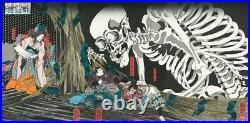

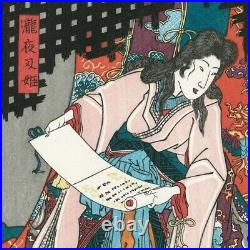
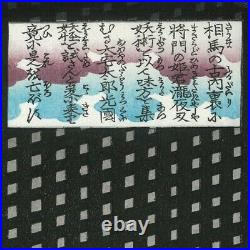


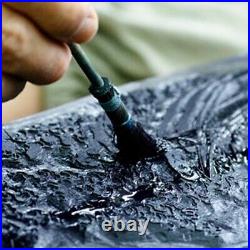
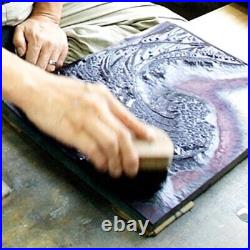

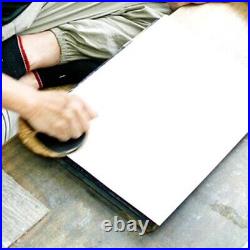
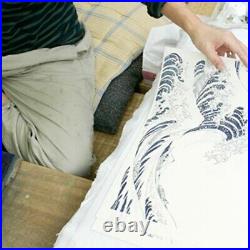
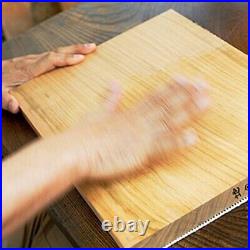
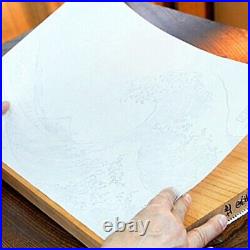
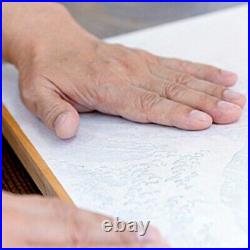

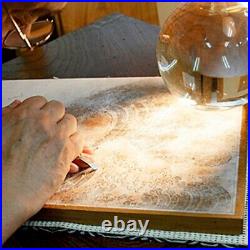
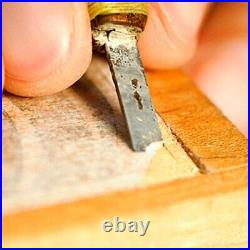
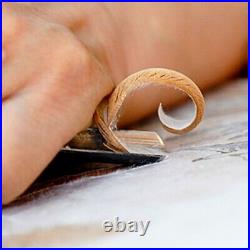
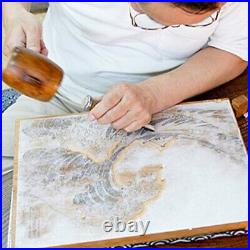
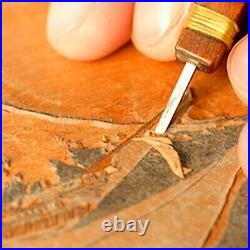
This product is a reprint of Ukiyo-e? What is the difference between reprinted ukiyo-e and ukiyo-e produced in Japan’s Edo period? It makes no difference. The only difference is the era in which they were made. The woodblocks are re-carved and hand-printed one by one on traditional Japanese paper. The greatest attraction of ukiyo-e is the unique soft texture of Japanese paper and woodblock prints, and the vivid colors that people of the time must have enjoyed. Dimensions : 14.57inch × 29.72inch. Paper : washi(Japanese tradition paper : Echizen-gami Hosho-sho). Princess Takiyasha is a legendary figure who is said to be the orphaned child of Taira no Masakado. She received witchcraft from the toad spirit and gathered the youkai in Soma’s old palace to plot her rebellion. This sorrowful story of Princess Takiyasha has become the subject of various literature and performing arts. The skeleton drawn by Kuniyoshi is drawn over three pieces, so it is very powerful and is a very popular pattern overseas. Utagawa Kuniyoshi was an ukiyo-e artist active at the end of the Edo period. Due to his unique painting style, he has been called a “fantasy painter”, and in recent years he has gained popularity among a wide range of generations. In the list of ukiyo-e artists at that time, Kuniyoshi, who painted samurai paintings, was listed as Hiroshige, who painted famous places. His rebellious and satirical works gained overwhelming support from the people of the time, and many disciples gathered to form the largest faction of ukiyo-e artists. The genealogy extends to Japanese painters in the Showa era.